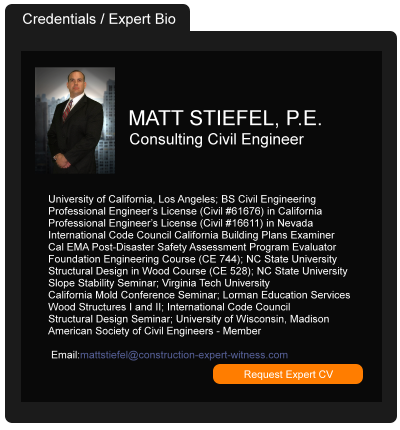The Fair Share Act Impacts the Strategic Planning of a Jury Trial
May 10, 2017 —
Andrew Ralston, Jr. - White and Williams LLPComplex questions surrounding the application of the Fair Share Act, which modified Pennsylvania’s common law “joint and several” liability law, are being taken up by courts in the Commonwealth with increasing frequency. Given the practical consequences of the differences in application between the Act and “joint and several” liability, additional litigation over the application of the Fair Share Act to real world factual situations will undoubtedly arise.
Recent Caselaw
Currently, in Roverano v. PECO Energy, the Superior Court of Pennsylvania is considering the question of whether, under the Fair Share Act, the jury, or else the trial judge, is responsible for the task of apportioning liability to multiple defendants in a strict liability case. In Roverano – an asbestos case -- a jury awarded the plaintiff $6.3 million. On the verdict sheet were eight joint tortfeasor co-defendants. The judge did not allow the jury to apportion liability to each defendant and, as a result, no guidance was provided by the jury about how much each defendant was to contribute to the award. Instead, the judge merely divided the jury’s award by eight (the number of defendants in the case) and apportioned to each defendant one-eighth of the verdict amount.
Read the court decisionRead the full story...Reprinted courtesy of
Andrew Ralston, Jr., White and Williams LLPMr. Ralston may be contacted at
ralstona@whiteandwilliams.com
Do We Need Blockchain in Construction?
June 22, 2020 —
Cristina Savian - AEC BusinessBlockchain technology claimed to have the potential to disrupt many aspects of how companies do business. And like other emerging technologies, I have been exploring its uses, benefits and assessing its potential opportunities in the construction industry. If like me, you have been wondering what it is and if its applications are limited to financial services and cryptocurrencies; you will be pleasantly surprised to discover that it has a lot more applications with exciting opportunities for our sector too.
Blockchain could have a significant impact on our industry. In writing this article I have discovered that the Australian government is full steam ahead, that many organisations are currently building their own blockchain networks and that it is something that businesses right across the built environment should be preparing for now. But more on that soon, first we need to define what blockchain is.
Read the court decisionRead the full story...Reprinted courtesy of
Cristina Savian, AEC Business
"Damage to Your Product" Exclusion Bars Coverage
February 02, 2017 —
Tred R. Eyerly - Insurance Law HawaiiThe Arkansas Court of Appeals affirmed the denial of coverage for the insured based upon the exclusion for "damage to your product." S.E. Arnold & Co. v. Cincinnati Ins. Co., 2016 Ark. App. LEXIS 625 (Ark. Ct. App. Dec. 7, 2016).
The homeowners paid the insured, S.E. Arnold & Company, over $78,000 to supply and install wood flooring in their residence. The homeowners eventually sued Arnold, alleging that the products and services as provided by Arnold had breached its contract, Arnold was negligent, and it violated applicable rules, regulations, and laws. Specifically, the homeowners alleged that the flooring as sold and installed had splinters, cupping occurred across the width of the individual pieces of flooring, and installation was in contradiction to industry standards and applicable building codes.
Read the court decisionRead the full story...Reprinted courtesy of
Tred R. Eyerly, Insurance Law HawaiiMr. Eyerly may be contacted at
te@hawaiilawyer.com
Colorado Passes Construction Defect Reform Bill
June 05, 2017 —
David Suggs – Bert L. Howe & Associates, Inc.According to Daniel E. Evans of Gordon & Rees Scully Mansukhani, Colorado’s state legislature recently passed a bill “designed to reduce litigation risk associated with building condos by requiring a majority of actual condo unit owners, as opposed to a majority of the HOA board members, to approve the filing of a lawsuit over construction defects.” Evans stated that this “legislation cannot be viewed as sweeping reform” and that “future legislative sessions will undoubtedly see additional efforts to reform construction defect litigation.”
Perhaps the most significant aspect of HB 1279 is the requirement for a majority of condo owners in a development to approve a lawsuit, Evans reported. Furthermore, HB 1279 “requires the HOA board to notify all condo unit owners and builders about plans to pursue a construction lawsuit. It further requires the HOA board to hold a meeting to allow the board and the developer to present facts and arguments to the individual condo unit owners, including arguments of the potential benefits and detriments of filing a lawsuit.”
Unlike its failed predecessors, HB 1279 does not require arbitration.
Read the court decisionRead the full story...Reprinted courtesy of
Revolutionizing Buildings with Hybrid Energy Systems and Demand Response
January 08, 2024 —
Aarni Heiskanen - AEC BusinessA recent study conducted by the Finnish Building Services 2030 group explores the potential technologies and business prospects for adaptable energy systems within buildings.
Building Services 2030 is a Finnish consortium of Aalto University, Tampere University, and 14 industry partners. The consortium has defined a shared vision for the Finnish building service sector and researches topics that help reach the vision. My company is responsible for the group’s communication, so I eagerly read the research reports as they come out.
One of the new reports I found very timely is about the energy flexibility of buildings. The authors are Senior Researcher Juha Jokisalo and Professor Matti Lehtonen from Aalto University. They highlight how the contemporary energy landscape is undergoing a significant transformation.
Read the court decisionRead the full story...Reprinted courtesy of
Aarni Heiskanen, AEC BusinessMr. Heiskanen may be contacted at
aec-business@aepartners.fi
New Home Construction Booming in Texas
October 24, 2022 —
Jason Daniel Feld & Ron Raydon - Kahana FeldWith the rapid relocation trends of families moving to Texas, it was reported that new residential construction permits in Texas grew to a total value in excess of $2 billion and over 7,500 new construction permits in September 2022 alone. D.R. Horton lead the way with 1,139 new permits, while Lennar Homes clocked 696 new permits. Other leading homebuilders including KB Homes (239 permits) and Pulte Homes (253 permits) remained active heading into the 4th Quarter of 2022. The following is a breakdown of new permits and average home values in the 4 largest cities in Texas (Houston, Dallas, Austin and San Antonio) for September 2022:
Houston
Last month, there were approximately 340 home builders with new permits on record in the Houston area, and the following ranked as the top five total new permits:
| Builder | Total Permits | Average Value |
|---|
| 1-D.R. Horton |
483 |
$ 129,812.00 |
| 2-Camillo Properties |
190 |
$ 147,790.00 |
| 3-Lennar Homes |
188 |
$ 195,503.00 |
| 4-Meritage Homes |
124 |
$ 248,597.00 |
| 5-Wan Pacific Real Estate Development |
117 |
$ 165,044.00 |
Dallas
In Dallas, there were more than 290 contractors with new residential construction activity on record with HBW last month, and the following ranked as the top five for total new permits:
| Builder | Total Permits | Average Value |
|---|
| 1-D.R. Horton |
555 |
$ 179,430.00 |
| 2-Lennar Homes |
232 |
$ 202,318.00 |
| 3-Trophy Signature Homes |
111 |
$ 274,016.00 |
| 4-Bloomfield Homes |
97 |
$ 405,235.00 |
| 5-Meritage Homes |
92 |
$ 267,425.00 |
Austin
Last month, there were nearly 125 home builders with new construction activity on record in the Austin area, and the following ranked as the top five for total new permits for the one-month period:
| Builder | Total Permits | Average Value |
|---|
| 1-Lennar Homes |
150 |
$ 154,390.00 |
| 2-KB Homes |
147 |
$ 253,606.00 |
| 3-D.R. Horton |
99 |
$ 200,416.00 |
| 4-Taylor Morrison Homes |
79 |
$ 365,183.00 |
| 5-David Weekley Homes |
64 |
$ 436,978.00 |
San Antonio
In San Antonio, there were nearly 120 contractors with new residential construction activity on record last month, and the following ranked as the top five for total new permits:
| Builder | Total Permits | Average Value |
|---|
| 1-Lennar Homes |
126 |
$ 174,315.00 |
| 2-KB Homes |
55 |
$ 254,109.00 |
| 3-Pulte Homes |
52 |
$ 241,012.00 |
| 4-M/I Homes |
51 |
$ 237,283.00 |
| 5-LGI Homes |
30 |
$ 202,760.00 |
The residential construction boom is Texas does not appear to be slowing down anytime soon. With new corporations relocating corporate offices to the Lone Star State each year, we expect this trend to continue for the foreseeable future. And with increased home production, we will closely monitor the increase in construction related litigation over the next five to ten years.
The increase in market activity attracts new or inexperienced builders and tradesman, making the importance of a proactive approach to construction management all the more important. Given the labor shortages and supply chain issues. It is imperative that Texas homebuilders take extra precautions to ensure quality construction practices and oversight to minimize potential litigation.
Reprinted courtesy of Jason Daniel Feld, Kahana Feld and Ron Raydon, Kahana Feld
Mr. Feld may be contacted at jfeld@kahanafeld.com
Mr. Raydon may be contacted at rraydon@kahanafeld.com
Read the court decisionRead the full story...Reprinted courtesy of
Additional Elements a Plaintiff Must Plead and Prove to Enforce Restrictive Covenant
April 19, 2021 —
David Adelstein - Florida Construction Legal UpdatesFlorida Statute s. 542.335 is a statute that deals with restrictive covenants in contracts that impose a restraint on trade. It is an important statute to determine invalid restraints on trade that unreasonably or unfairly prevent competition. Any invalid restraint on trade is unenforceable. Restrictive covenants–or covenants in agreements that restrict you or prevent you from doing something–may unsuspectingly be included in contracts or the impact of the restrictive covenant may not be appreciated at the onset.
A party seeking to enforce a restrictive covenant in a contract has the additional burden of PROVING the validity and reasonableness of the restrictive covenant:
Under section 542.335, three requirements must be satisfied for a restrictive covenant to be enforceable: (1) the restrictive covenant must be “set forth in a writing signed by the person against whom enforcement is sought”; (2) the party seeking to enforce the restrictive covenant “shall plead and prove the existence of one or more legitimate business interests justifying the restrictive covenant”; and (3) the party seeking to enforce the restrictive covenant “shall plead and prove that the contractually specified restraint is reasonably necessary to protect the legitimate business interest or interests justifying the restriction.”
Read the court decisionRead the full story...Reprinted courtesy of
David Adelstein, Kirwin Norris, P.A.Mr. Adelstein may be contacted at
dma@kirwinnorris.com
How Contractors Can Prevent Fraud in Their Workforce
August 13, 2019 —
Sarah Hofmann - Construction ExecutiveThe word fraud might conjure up images of Wall Street executives led out to police cars in cuffs, or sleazy conmen with slicked-back hair. While these ideas might be popular in movies and TV, and often in the news, many small and large businesses fall victim to fraud. Whether it’s a trusted site manager who needed a little extra cash to cover an unexpected bill or the accountant who’s been on board for years and has been slowly siphoning an extra paycheck through a ghost employee each month, fraud might be hitting businesses without them even knowing it.
The construction industry is hardly immune to such schemes. According to the ACFE’s 2018 Report to the Nations on Occupational Fraud and Abuse, organizations lose an estimated 5% of their revenue each year to fraud. The median amount lost per instance of fraud was $130,000 across all industries, but fraud cases in the construction industry cost almost twice that much at $227,000 per fraud. They also last longer on average: fraud schemes in the construction industry continue for 24 months before being detected versus the overall median average of 16 months. The more time a scheme continues, the more money is lost for organizations.
What types of fraud schemes are most common in the construction industry?
The construction industry is more susceptible to certain types of fraud than other industries due to the nature of the work. The companies may be smaller in size leading to fewer resources to combat fraud and more trust among employees. Also, construction companies inherently deal with many vendors, subcontractors, bidding organizations and other various third parties, which can all pose fraud risks.
Reprinted courtesy of
Sarah Hofmann, Construction Executive, a publication of Associated Builders and Contractors. All rights reserved.
Read the court decisionRead the full story...Reprinted courtesy of


































































